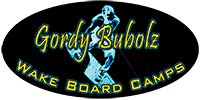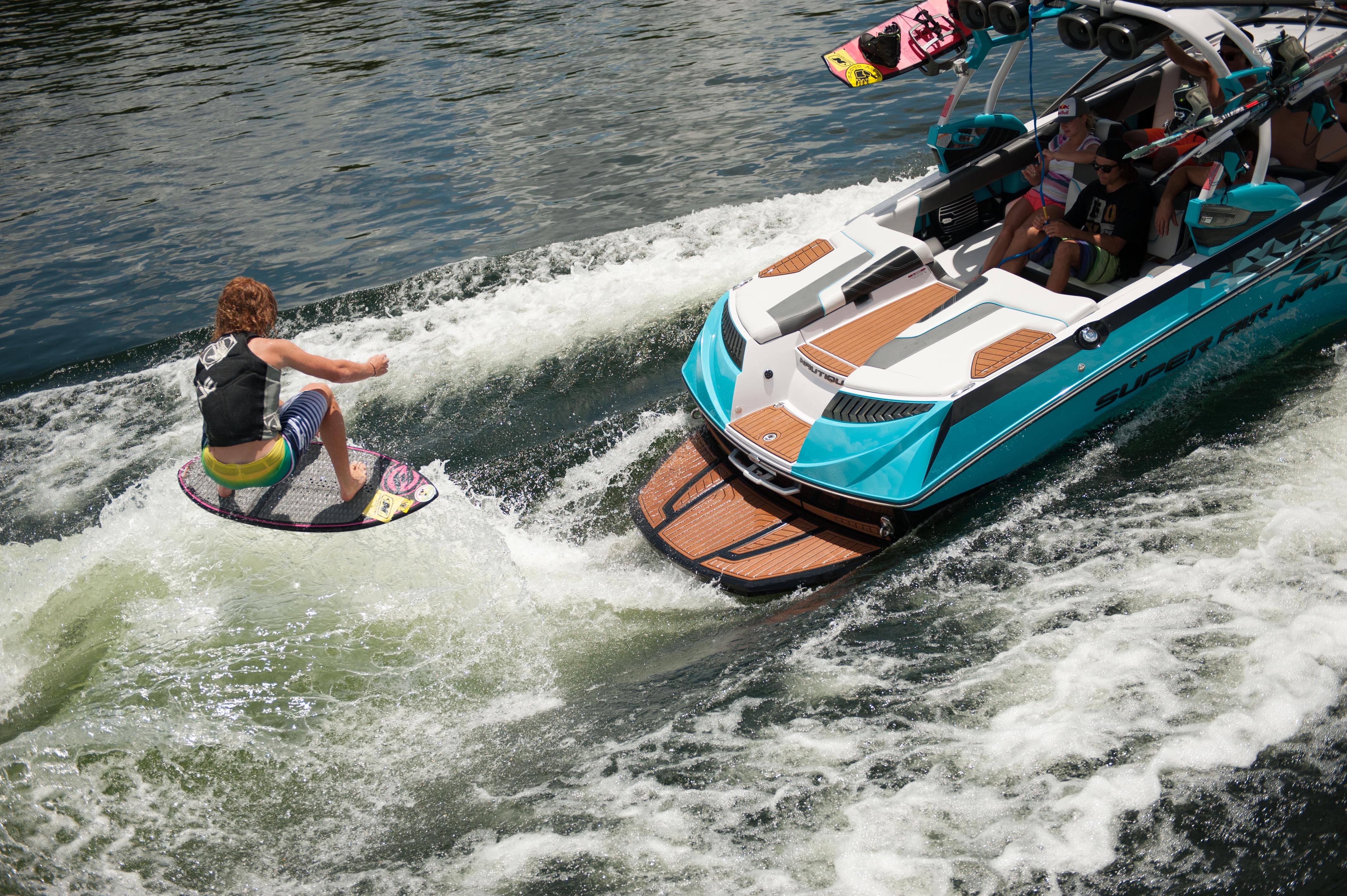Wakesurfing
Surfing in The Midwest!
The first time I tried Wake surfing I was hooked. The feeling of riding without a rope, the slow boat speeds, and ability to surf in rough water makes the sport addictive for anyone.
Overview
Only wake surf on Inboard or V drive boats. Most people find the best wake at 9-11 MPH. Starting line length should be about 10 feet past the back platform of the boat. If you have Fat Sacs you’ll want to heavily weight the port side of the boat (starboard for Nautiques) to get the best surfing lip. Typically you’ll need at least one thousand pounds of weight in the boat to get a ride able surf wake.
Getting Started
The easiest way to get up on a wake surfer is to lie on your back in the water, and place your heels on the board wider than shoulder width apart. When you are set in this position, have the driver put the boat in gear. As you slowly are pulled through the water, simply press down on your heels and the board will be tipped under your feet and ready to ride. At this point getting up on the wake surfer is exactly the same as a wakeboard start.
Facing the Wake
With every boat, there is one side of the wake that will always have a better lip than the other side. The cleanness of the lip is determined by the rotation of the boat’s propeller. Basically, for every boat except Nautiques the wake will be better on the Port side of the boat. What this means for wake surfing is that you may have to ride the board switch, or opposite foot forward, so that you can face the wake, as opposed to having your back to the wake. I think it’s a lot easier to always be facing the wake because you can see when you’re falling off the wake and make adjustments quicker. It really doesn’t seem to hinder beginners if they have to learn to ride with their opposite foot forward.
Fundamentals
Wake surfing uses all the same techniques as surfing in the ocean.
To accelerate toward the boat, put more weight on your front foot, to slow down put more weight on the tail. Your stance should be very wide, more than shoulder width apart so you can easily rock back and forth on the board to stay on the right spot of the wave. While riding and still holding on to the handle, the first thing to practice is getting the feel of a “loose” rope. After you can ride for at least 20 seconds with the rope being slack, it’s time to throw the handle in the boat and surf.
On the Wake
Getting the feel for how the wake pushes you along can be the trickiest part. Where most beginners go wrong is that they don’t stay on top of the wake enough, and go off the side of the boat too far. Always keep pressure on the edge of the board to keep it on top of the wake. Lightly bouncing on your front foot, or milking the board, will quickly accelerate the board forward when you get back too far from the boat and start loosing the push of the wave. Another way to keep up with the wave is to paddle or slap the water back with your hand to gain speed. The learning curve is very fast in wake surfing, it’s not uncommon to see new riders surf rope-free and slashing the wave after just a few times on the board.

